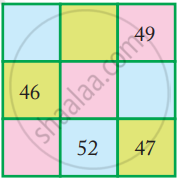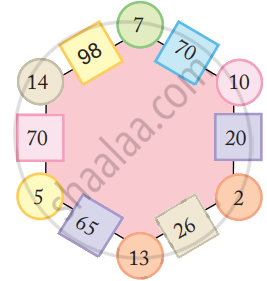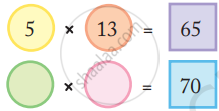Advertisements
Advertisements
प्रश्न
If N ÷ 5 leaves remainder 3 and N ÷ 2 leaves remainder 0, then N ÷ 10 leaves remainder 4.
विकल्प
True
False
उत्तर
This statement is False.
Explanation:
Here it’s given N ÷ 5 leaves remainder 3
⇒ N = 5n + 3,where n = 0, 1, 2, 3, ...
And N ÷ 2 leaves remainder 0
⇒ N is an even number
But N = 5n + 3, it’s sum of two terms whose second term is odd.
Therefore, 5n should be an odd number.
5n can be odd when n = 1, 3, 5, ...
So, in this case when N = 5n + 3
⇒ N = 5(1) + 3 = 8 when (n = 1)
Hence when we substitute n = 1, 3, 5, ... in N = 5n + 3, we get 8, 18, 28 etc
Now, when we divide N by 10, N can be written as
N = 10 × n + 8, when n = 0, 1, 2, 3, ...
Therefore, when N ÷ 10, always leaves remainder 8.
APPEARS IN
संबंधित प्रश्न
Given an example of a number which is divisible by 2 but not by 4.
Do you remember magic triangles? Come now, let s make some magic squares.
- Fill this square using all the numbers from 46 to 54.
Rule: The total of each line is 150.
Look at the patterns of numbers in hexagons.
Each side has 2 circles and 1 box.


- Look at the number 65 in the box. Which are the circles next to it?
- Can you see how the rule works?

Are they equal?
Now you try and change these numbers into special numbers —
28
If 5A × A = 399, then the value of A is ______.
20 × 3 is a multiple of 3 if the digit × is ______ or ______ or ______.
The sum of a two-digit number and the number obtained by reversing the digits is always divisible by ______.
If B × B = AB, then either A = 2, B = 5 or A = ______, B = ______.
Fill in the blank space in the same way.

